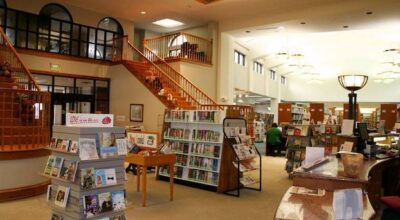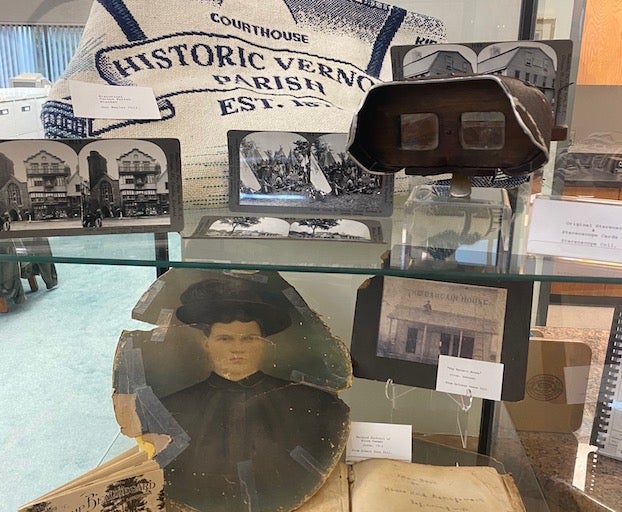Visions of Vernon: Vernon Parish Communities, Sandy – Sandy Hill
Published 9:59 am Tuesday, July 28, 2020
Sandy (T1S, R7W) was a 20th century community located in Ward Five three miles north of Cravens in the present-day Gravel Hill community on Cooter Johnson Loop. In 1904 the population was 75 to 100.
Sandy received a post office from 1904 to 1905 with Rev. Henry M. Calhoun as the only postmaster. Mail from Sandy went to Slabtown.
According to some maps, Sandy was the old community of Comrad, which had a post office from 1892 to 1898. Perhaps Comrad's name came from Comrade Turpentine Company of New Orleans. Comrad had a population of 20 families with no village in 1892. Other maps have the communities of Sandy and Comrad one mile apart.
Sandy's history is very limited. Rev. Calhoun homesteaded his 160 acre farm in 1901 between Birds and Little Sixmile Creeks. Even though Henry's land grant was on Little Sixmile Creek, he was never listed as a mill owner. According to an 1885 postal map, Sandy was located on the Leesville to Sugartown trace.
The first patent holders in the township were the carpetbaggers. From 1888 to 1892 three carpetbaggers purchased 7,432 acres or 32% of the township. Nathaniel Fairbank and Turlington Harvey formed a partnership and purchased a total of 5,845 acres in 1889 and 1892. Franklin Head purchased 1,587 acres in 1888. The first families to hold patents were Bailey in 1897, Bass in 1900, James in 1904, Johnson in 1890, and Perkins in 1902.
In early Vernon Parish history children went to Gravel Hill School. The school was large with 41 students. All students except five lived in the township. In 1930-31 the school was still open with 89 students and four teachers. Eventually it was closed and all students were bused to Pitkin School.
Sandy Creek (T3N, R11W, Sec. 26) was a Postbellum Period hamlet established in northwest Vernon Parish about 7 1/2 miles west of Anacoco and 4 1/2 miles east of Hadden.
According to a Morse and Breeze 1842 map of Louisiana, an east-west road from present-day Hicks community to Bevil's Ferry ran through the community.
Sandy Creek received a post office from 1886 to 1895 or 1897 with Young C. Palmer as the only postmaster. Young operated the Koonce mill, which is why the hamlet was also called Palmer Mill. The hamlet's population was 40 in 1886. Mail from Sandy Creek went to Anacoco.
Sandy Creek and Monks Hammock shared the township. The first homesteader was William (Bill) Langton in 1843. Other early settlers were William Davis in 1846, Gadi West in 1846, Loring Clark in 1852, and many more in 1860. Carpetbagger Charles H. Hackley purchased 5,143 acres in 1888.
Northwest Vernon parish is the most elevated area of the parish. In the adjacent township is Vernon Parish's highest point and Louisiana's fourth highest point at 484 feet above sea level. The hills of the community drop abruptly to meet the Sabine River creating a fall line. A fall line is a boundary between an upland region and a floodplain distinguished by waterfalls and rapids. For this reason, several early water-powered mills were located in the community. The Langton, Koonce, and Hughes mills were three of them.
The Langton family was the dominating family of the community with 21 land grants totaling 1,200 acres starting in 1843. William M. Langton homesteaded eighty acres in 1843 and forty in 1846 on Sandy Creek. In 1860 and 1870 he listed his occupation as miller.
The Koonce family was another large family in Sandy Creek. The family had nine land grants totaling 720 acres. James Philip Koonce was the first Koonce to settle in Vernon Parish. He was a doctor and a common school teacher. In 1860, he homesteaded 240 acres in Section 27 on Sandy Creek. According to records, the Koonce brothers, which could have been Chris, Benjamin, James, William, and John, ran the mill.
The third mill was the Hughes mill, probably owned by Leonard Hughes who homesteaded 160 acres in 1898 in Sections 18 & 19. His homestead was not on Sandy Creek, but was on Macelva Creek, which emptied into Sandy Creek.
Sandy Creek was in Ward Two. In early Vernon Parish history there were fourteen schools in Ward Two. In Sandy Creek's township, Good Hope and Toro Schools serviced the community. Other schools in the surrounding area were China Grove, Holly Grove, and Pine Grove to the east and Beech Grove to the south. In 1906, China Grove, Good Hope, Holly Grove, and Pine Grove Schools were still open. In 1926, all schools were consolidated into one large school at Orange, which is Anacoco today.
Sandy Hill (31.0290782 N, -93.2226620 W) is a 20th century community located 2.7 miles west of Pickering on LA Hwy. 10 adjacent to Fort Polk.
The community received a post office from 1965 to 1966. The need of a post office was due to the growth of the military population at Ft. Polk because of the escalation of the Vietnam War. Mail from Sandy Hill went to Leesville.
One of Sandy Hill's first settler was James R. Swain who settled in the community in 1859. The intersection of Bundicks Rd. and LA Hwy. 10, the geographic center of Sandy Hill, was owned by Willis J. Brown who settled the area in 1900. Other families that settled in the community were Davis, Graham, Jeane, Johnson, LeBleu. and Oakes.
It has been said the plow followed the skidder. The same was true in Vernon Parish. Investors knew cutover land would be available and cheap. Charles E. Granniss of Pineland Manufacturing Company of Kansas City, Missouri purchased 20,000 acres of the future Sandy Hill community. Charles formed a demonstration farm called Granniss Plantation to attract buyers and sold the land for $10.00 an acre. The plantation went bankrupt in 1918 and much of the farm was purchased by Harvey Oakes.
Sandy Hill is in Ward Four. When Vernon Parish was established in 1871 Ward Four received thirteen schools (Ward Seven was part of Ward Four). The community's 19th century schools were Elmwood to the west, Petersburg to the north, and Whiskachitto to the east. Over the years other schools opened while some closed. Granniss received a school in the early 1900s. Some of them were Cooper, Granniss, Hunt Springs, Jeane Chapel, Pickering, and Whiskachitto. In 1922, Cooper and Granniss Schools closed while Pickering and Whiskachitto remained open as Ward Four's only schools.
This article originally appeared on Leesville Daily Leader: Visions of Vernon: Vernon Parish Communities, Sandy – Sandy Hill





